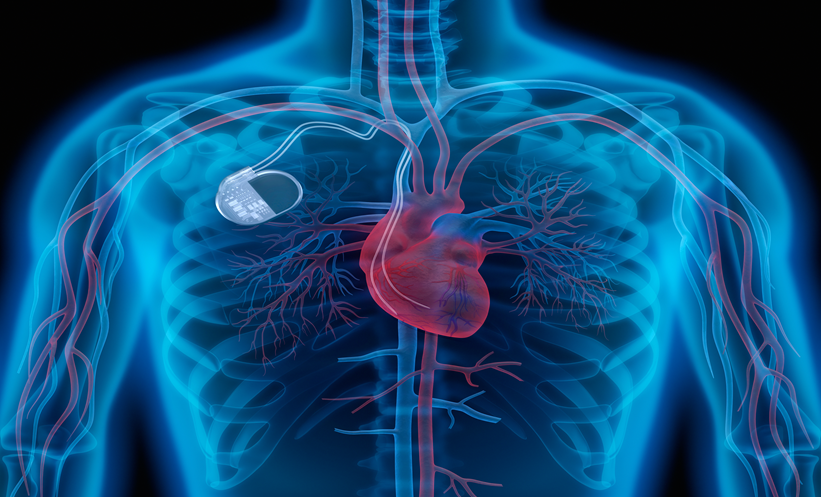Author: Noémie Fouarge, EMJ
Citation: EMJ Int Cardiol. 2023; DOI/10.33590/emjintcardiol/10305079. https://doi.org/10.33590/emjintcardiol/10305079.
![]()
THE CROÍVALVE DUO TRICUSPID COAPTATION VALVE SYSTEM
Wojtek Wojakowski, Medical University of Silesia, Katowice, Poland, introduced the DUO Tricuspid Coaptation Valve System (CroíValve, Dublin, Republic of Ireland) as a treatment for TR. This device was designed while keeping in mind challenges faced when treating TR, including the clinical severity of patients with this condition, who often present late; the anatomic complexity, which presents a contra-indication to available therapies; and the challenge of imaging of the tricuspid valve in these patients. The DUO Coaptation valve system was created to be less dependent on imaging or anatomy, with a straightforward, quick, and well-tolerated procedure. It is composed of an anchoring system and stent, and a prosthetic valve with coaptation skirt, which is inserted through the jugular vein, under general anaesthesia, with transoesophageal echo guidelines.
The TANDEM I first-in-human trial, a prospective, non-randomised, multicentre study, aimed to demonstrate the effectiveness and safety of the system in patients with severe symptomatic TR, despite optimal medical therapy. Participants were predominantly female, with New York Heart Association (NYHA) Class III or IV, and 62.5% had massive or torrential TR. After 6 months, the trial showed a 100% reduction of TR to mild or moderate, a 100% improvement of NYHA to Class I or II, as well as a 59 point Kansas City Cardiomyopathy Questionnaire (KCCQ) increase, and a 112 m increase in 6 minute walk test. There were no major adverse events or mortality reported; however, reintervention was necessary in two cases due to sizing mismatch. Overall, Wojakowski stated the trial demonstrated the ease of use of the design, and significant improvements in symptoms in quality of life after 6 months.
PIVOT-TR
Joo-Yong Hahn, Heart Vascular Stroke Institute, Samsung Medical Center, Seoul, South Korea, introduced Pivot-TR (Tau-PNU Medical Co, Yangsan, South Korea), a vertical spacer for the reduction of TR. This device is self-centring and has an atraumatic anchoring structure. The procedure is simple (<20 minutes) and there is no need for complex imaging guidance, as it is performed under fluoroscopic and transthoracic echocardiogram guidance. The device consists of two major parts: a pivot access, including distal elephant-nose and proximal spiral anchor; and an expandable 3D leaflet. It is inserted through the femoral vein using a guide wire, and the distal elephant nose is placed in the right lower pulmonary artery. After removing the delivery catheter, the leaflet is allowed to expand and the anchor is deployed in the inferior vena cava.
Hahn then presented the Pivot balloon clinical trial, which was performed on the recommendation of the Korean FDA, and aimed to evaluate technical feasibility, early-stage safety, and preliminary efficacy of the system for patients with chronic severe to torrential TR. As the device was only left in place for less than 1 week, there are no long-term data available yet. The trial enrolled a total of seven patients, and the procedure was successful in all patients, with no procedure-related safety events reported. Echocardiographic data showed a significant decrease in vena contracta width of TR, TR jet area, and effective regurgitant orifice area; and TR decreased by two or more grades in all but one patient. Hahn explained this makes the pivot balloon a safe, feasible, and effective solution for TR reduction in humans. Next steps for this device involve an ongoing trial, which will place the device for more than 1 week, and future trials, which could explore permanent placement.
TRILLIUM™
Philipp Lurz, Leipzig Heart Center, University of Leipzig, Germany, continued the session by highlighting the “still forgotten” patient population with TR, consisting of those who are unable to get surgical treatment or currently available commercial transcatheter tricuspid valve therapies. This includes patients with lead-induced TR, those with a prior failed tricuspid repair, and those with a large coaptation gap. These populations could benefit from heterotopic therapies, such as the TRILLIUM™ (Innoventric, Ness Ziona, Israel) device, presented by Lurz. This device utilises a cross-caval anchoring and unique multi-valve design to ensure long-lasting blood flow regulation.
This self-expandable stent contains three bovine pericardial valves, and is implanted from the superior vena cava, across the right atrium, into the inferior vena cava. A sealing skirt functions to avoid backward flow. The procedure is simple and straightforward, with a device implantation time under 10 minutes, no need for echo guidance, and no need for general anaesthesia.
In total, 18 patients have benefitted from this treatment, with NYHA functional Class III or IV, reduced cardiac index, and clear reduction in kidney function. The trial resulted in 100% technical success, with an average implantation time of 6.7 minutes. After implantation, peak central venous pressure was reduced immediately, and 100% of patients experienced a reduction in TR grade to mild. Mortality was caused by multi-organ failure and sepsis in one patient, two patients suffered from acute renal failure, and one patient of phrenic nerve damage; however, according to Lurz, this reflects the already fragile patient cohort. They also noted a transient inflammatory response induced by the procedure, which resolved after a few days. Lurz concluded these data suggest that treatment with this device is safe, feasible, and efficient in reducing backflow from the right atrium into the venous system.
TRISOL VALVE
Ran Kornowski, Rabin Medical Center, Petah-Tikva, Israel, presented the Trisol valve (Trisol Medical, Yokneam, Israel), a single dome-shaped leaflet with two commissures on both sides, anchors for ventricular fixation, as well as a ring for atrial fixation. While implantation is currently transjugular, a transfemoral approach is currently in development. Kornowski explained that the advantage of this device is that it can be used in patients with a large annulus, with the device currently supporting up to 53 mm, with 60 mm being developed.
The Trisol valve was first used in-human on 1st March 2021, at Rabin Medical Center, when compassionate use of the device was authorised for urgent use in a patient. There is now more than 2 years of follow-up for this case, showing good functional status, stated Kornowski. Since then, a pilot study with five patients has been completed to gain insights into the system’s safety, and its performance in treating severe to torrential TR.
While all participants had severe to massive TR at baseline, at the latest follow-up this had decreased to none, mild, or moderate in all patients. Furthermore, NYHA had decreased from III–IV at baseline to I–II at follow-up. In the last two cases, the design was improved from six to 12 anchors to facilitate the capturing of valve leaflets. Surgical reintervention was necessary in one case due to partial valve detachment, and one patient died 69 days post-procedure due to acute renal failure and sepsis (not procedure or device related). Kornowski concluded that the results of this trial are promising, as all cases showed a reduction in TR, improvement in NYHA, and no reduction in right ventricular function.
CONCLUSION
Patients with TR often have comorbidities, require frequent hospitalisations, and have an increased risk of mortality. There remains an unmet need for less invasive treatments when it comes to this condition, due to the high surgical risks. The transcatheter approaches presented at this session offer a shorter, more straightforward procedure to treat TR, providing options for patients who are unable to receive currently available treatments.








